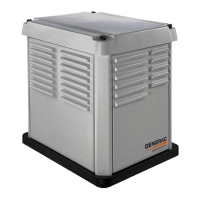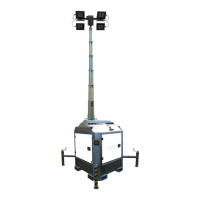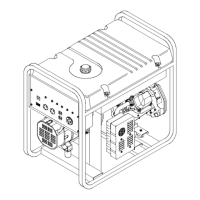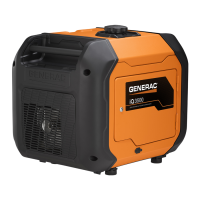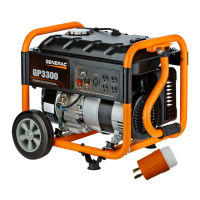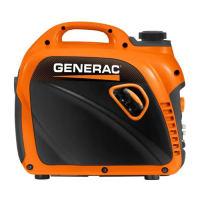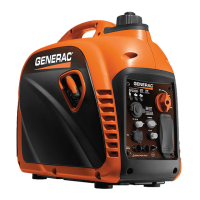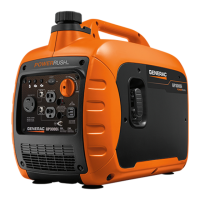PART 2
AC GENERATORS
Section 2.4
Diagnostic Tests
TEST 15 – CHECK FOR OVERLOAD
CONDITION
Discussion
An “overload” condition is one in which the generator rated
wattage/amperage capacity has been exceeded. To test for an
overload condition on an installed unit, the best method is to
use an ammeter. See “Measuring Current” in Section 1.2.
Procedure
Use a clamp-on ammeter to measure load current draw, with the
generator running and all normal electrical loads turned on.
Results
1. If the unit is overloaded, reduce loads to the unit’s rated
capacity.
2. If unit is not overloaded, but rpm and frequency drop
excessively when loads are applied, go to Test 16.
TEST 16 – CHECK VOLTAGE AND
FREQUENCY UNDER LOAD
Discussion
It is possible for the generator AC output frequency and voltage
to be good at no-load, but they may drop excessively when
electrical loads are applied. This condition, in which voltage
and frequency drop excessively when loads are applied, can
be caused by (a) overloading the generator, (b) loss of engine
power, or (c) a shorted condition in the stator windings or in
one or more connected loads.
Procedure
1. Connect an accurate AC frequency meter and an AC
voltmeter across the stator AC power winding leads.
2. Start the engine, let it stabilize and warm-up.
3. Apply electrical loads to the generator equal to the rated
capacity of the unit.
4. Check the AC frequency and voltage. Frequency should
not drop below approximately 58-59 Hertz. Voltage
should not drop below about 230 volts (plus or minus 2
percent).
Results
1. If frequency and voltage drop excessively under load, go
to Test 15.
2. If frequency and voltage under load are good,
discontinue tests.
Page 36
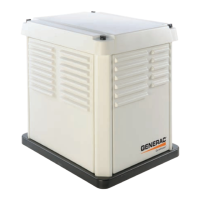
